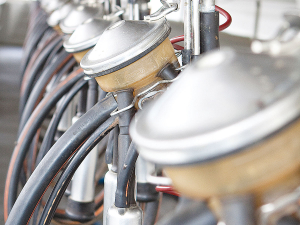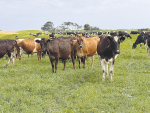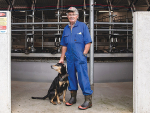Correct cluster attachment and removal is crucial during milking.
It ensures that the milk is of good quality, prevents harm to the teats, and reduces the risk of mastitis. Attaching the milking cups correctly helps with efficient milking, less tiredness and injuries for the milkers, and calmer behaviour from the cows. It’s important to remove the clusters properly to avoid over milking, causing teat damage or liner issues. Keeping the milking machine in good condition is important for smooth cluster removal.
Attaching clusters is a major part of the milking routine. Having a consistent routine across all milkers is important. Clusters which are not attached correctly can lead to teat end damage, cup slipping, and mastitis.
The benefits of correct cup attachment include:
- Increased milking efficiency
- Reduced milker fatigue and injury.
- Improved cow behaviour - cows will be calmer and more acceptant of the clusters.
Attachment of clusters is given surprisingly little attention considering it has a major role in the milking routine./p>
Most milkers develop their own method without any direction. This can lead to poor cupping techniques and issues with repetitive strain injury. The aim is to find ways to change clusters consistently and reliably without unnecessary physical strain and avoid the problems of muscle/ tendon overuse.
Two cupping techniques are explained here and switching between methods during milking is recommended to relieve muscle strain. Each method works on rotaries or herringbones, although there are some refinements depending on the dairy type.
Round-the-circle method
This method is (or should be) taught to all new milkers as a simple, easy-to-learn, reasonably quick method that avoids problems. It is not the fastest method but it is reliable and easier on the milker because there is much less chance of getting kicked.
Once the clusters are attached, check the cluster alignment with the udder. The clusters should sit squarely under the udder. In herringbones where the clusters are attached from between the back legs, the long milk tube and pulse rubber should be in line with the cow’s backbone. Many new dairies, both rotary and herringbone, come with cluster alignment components.
All milkers should know how to remove clusters correctly - clusters which are left on too long result in over-milking, liner creep and teat end damage.
Cluster Removal
Milking machine function must be maintained to ensure cluster removal is easy for the milker, and causes no cow discomfort or teat damage.
The benefits of correct cup removal include:
- Cows are milked out but not over-milked with correct timing of removal.
- Milk quality maintained
- Increased milk efficiency
- Reduced animal health issues through ensuring teat damage does not occur.


















